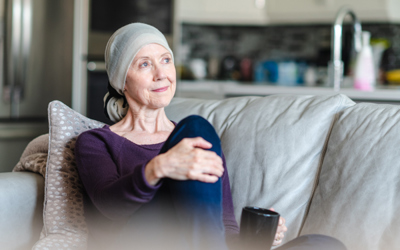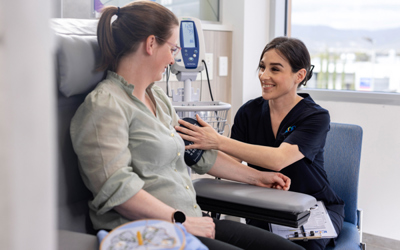Quick facts about acute myeloid leukaemia
Acute myeloid leukaemia (AML) is a form of acute leukaemia which develops when bone marrow produces immature blood cells which divide rapidly and do not mature
These immature myeloid cells are called myeloblasts, which normally develop into white blood cells, red blood cells or platelets
AML is the most common form of acute leukaemia in adults, primarily affecting Australians over the age of 65
Each year approximately 1,100 Australians are diagnosed with AML.
Types of acute myeloid leukaemia (AML)
There are many different subtypes of AML which are defined based on genetic mutations that have caused the cancer.
The World Health Organisation’s (WHO) classification system classifies AML into subtypes using a number of factors including genetic abnormalities, myelodysplasia-related changes, past exposure to radiation or chemotherapy, myeloid sarcoma and myeloid proliferations in Down syndrome.
Signs and symptoms of acute myeloid leukaemia
As signs and symptoms for AML can be similar to other common conditions, it’s important to see your GP or healthcare professional if you experience any of the symptoms below. Discussing anything concerning as soon as possible can help give you peace of mind and offer the best chance of successful treatment if you receive an AML diagnosis.
Symptoms may include:

Unexplained fevers

Tiredness

Night sweats

Aches and pain in the bones

Unexplained weight loss or loss of appetite

Pain in the chest, coughing and/or trouble breathing

Swollen, painless lymph nodes under the arms, neck or groin

Enlarged stomach due to swollen lymph nodes or spleen

Chronic infections

Anaemia due to lack of red blood cells

Increased bleeding and bruising
Stages of acute myeloid leukaemia
The traditional cancer staging system is not used to stage AML. Instead, the subtypes of AML can help define what your cancer looks like based on laboratory testing (including genetic testing) and the classification systems.
Treatment for acute myeloid leukaemia
There are many different types of treatment for AML. Your treatment will depend on you and your cancer.




